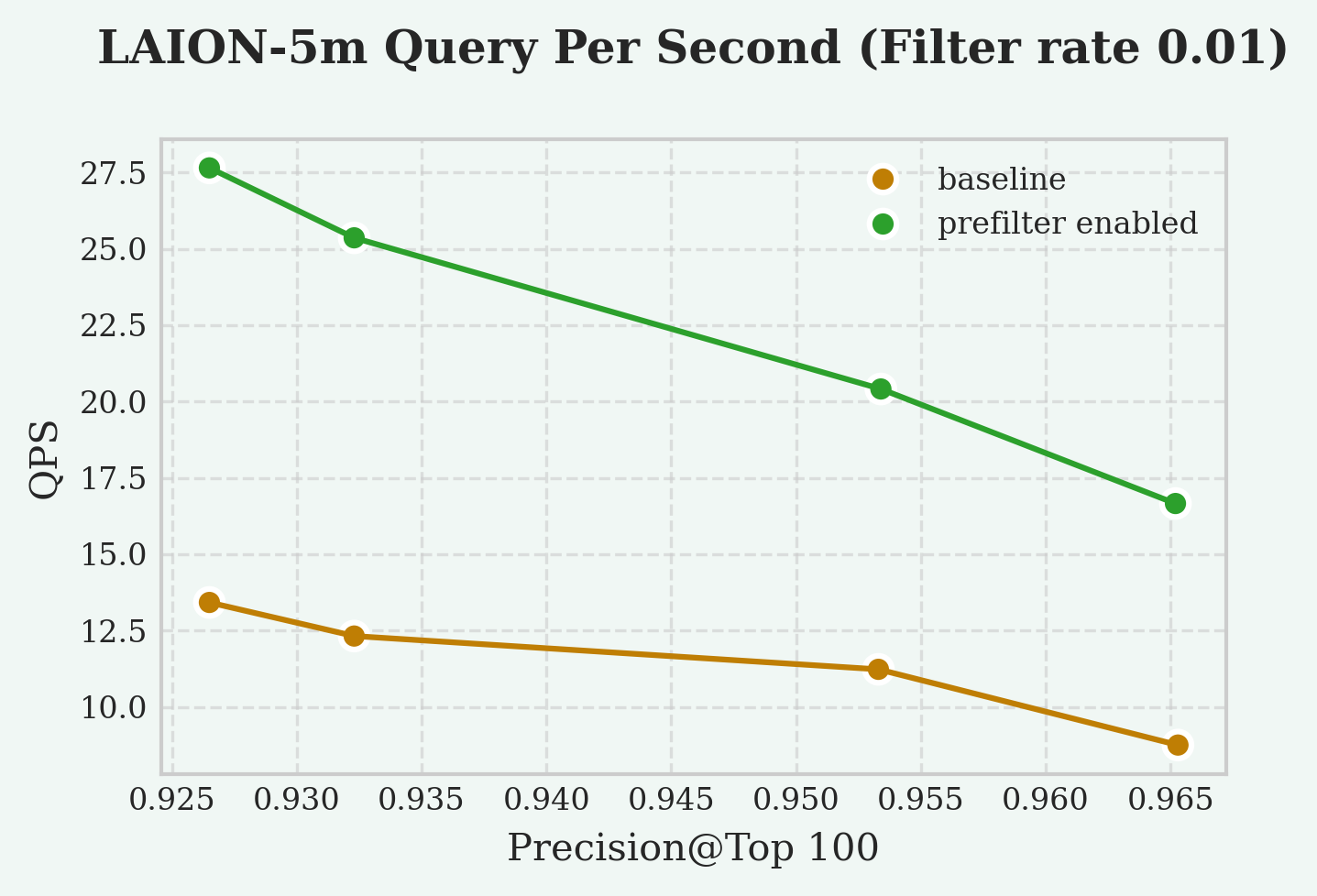Prefilter since v0.4.0
In a filtered index scan, the index performs the scan first and then PostgreSQL checks whether the filter conditions are satisfied. On this page, "filter" refers to the filter on the index scan node of the query plan in PostgreSQL. This is usually constructed from the WHERE clause in the SQL statement. The filter does not need to have a specific form.
EXPLAIN (COSTS FALSE)
SELECT * FROM items WHERE id <= 5000 AND vector_norm(embedding) < 0.5;
QUERY PLAN
--------------------------------------------------------------
Index Scan using items_pkey on items
Index Cond: (id <= 5000)
Filter: (vector_norm(embedding) < '0.5'::double precision)However, this is not always the most efficient approach for vector search. Consider the following query.
EXPLAIN (COSTS FALSE)
SELECT * FROM items WHERE id % 97 = 0 ORDER BY embedding <-> '[0, 0, 0]' LIMIT 10;
QUERY PLAN
-----------------------------------------------------
Limit
-> Index Scan using items_embedding_idx on items
Order By: (embedding <-> '[0,0,0]'::vector)
Filter: ((id % '97'::bigint) = 0)To retrieve vchordrq.prefilter that allows pruning of the search space based on the filter condition.
SET vchordrq.prefilter = on;Prefilter enables the vector index to perform the search based on the filter. This prunes the search space, and a smaller search space leads to a more efficient search. However, checking whether the filter conditions are satisfied also introduces overhead. So prefilter is only recommended when the filter is strict (eliminating many rows) and cheap (computational cost is much lower than computing vector distances). To aid understanding, we present two incorrect usage examples:
id % 97 > 0: this filter is relaxedemail ~ '^([a-zA-Z]+)*$': this filter is expensive
Based on our experimental results, the QPS speedup at different selectivity is as follows:
- 200% speedup at 1% selectivity
- 5% speedup at 10% selectivity

Reference
This feature is not supported by vchordg.
Search Parameters vchordrq
vchordrq.prefilter since v0.4.0
- Description: The
vchordrq.prefilterGUC parameter enables condition evaluation before distance computation. For example, in the querySELECT * FROM items WHERE id % 2 = 0 ORDER BY embedding <-> '[3,1,2]' LIMIT 5, the index normally computes all usefulembedding <-> '[3,1,2]'distances first and then pass the rows to PostgreSQL, which filters out rows whereid % 2 != 0. This parameter allows the index to pre-evaluate the condition and discard non-matching rows before computing their distances, improving query efficiency. - Type: boolean
- Default:
false